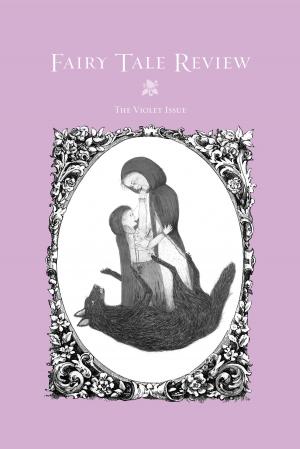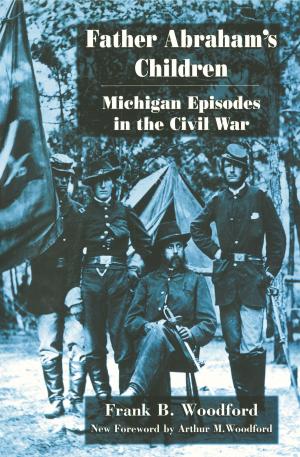Erotic Infidelities
Love and Enchantment in Angela Carter's The Bloody Chamber
Nonfiction, Social & Cultural Studies, Social Science, Folklore & Mythology, Fiction & Literature| Author: | Kimberly J. Lau | ISBN: | 9780814339343 |
| Publisher: | Wayne State University Press | Publication: | December 1, 2014 |
| Imprint: | Wayne State University Press | Language: | English |
| Author: | Kimberly J. Lau |
| ISBN: | 9780814339343 |
| Publisher: | Wayne State University Press |
| Publication: | December 1, 2014 |
| Imprint: | Wayne State University Press |
| Language: | English |
In the thirty-five years since the publication of The Bloody Chamber, Angela Carter’s reimagined fairy tales have inspired an impressive body of criticism. Yet none has addressed the ways her fairy tales grapple with and seek to overcome the near impossibility of heterosexual love and desire under patriarchy. In Erotic Infidelities: Love and Enchantment in Angela Carter’s The Bloody Chamber, author Kimberly J. Lau argues that the strangeness of Carter’s fairy-tale enchantments—the moments when love or erotic desire escape the deeply familiar, habitual structures and ideologies that contain them—show the momentary, fleeting possibilities for heterosexual love and desire. Lau begins by situating her reading of The Bloody Chamber—as individual stories and as a collection—within and against the critical literature, especially that which addresses Carter’s relationship to psychoanalytic theory and issues of language and desire. In chapter 2, she illustrates Carter’s construction of gender and language as labyrinthine structures—complex cultural edifices constructed and augmented over time. She moves on to consider Carter’s “feline stories” in chapter 3—“The Courtship of Mr. Lyon,” “The Tiger’s Bride,” and “Puss-in-Boots”—as an initial move away from the labyrinthine structures and toward an alternate erotics. In chapter 4, she reads “The Erl-King” and “The Snow Child” as another pair of mirrored tales, while chapter 5 elaborates on the pedophilic and necrophiliac fantasies of a pornographic culture, introduced in the previous chapter with the Count’s desire for the Snow Child. In chapter 6, Lau situates Carter’s three concluding stories—the wolf trilogy—within the context of feminist psychoanalytic understandings of infidelity as that which destabilizes patriarchal hegemonies and constructs. Lau argues that Carter’s “erotic infidelities” work against our culturally determined expectations and longings and usher us into welcome new enchantments. Situated at the intersection of feminist, psychoanalytic, literary, and fairy-tale studies, readers interested in a variety of scholarly disciplines as well as scholars of Carter’s tales will enjoy Lau’s look at enduring questions of gender, sexuality, and desire.
In the thirty-five years since the publication of The Bloody Chamber, Angela Carter’s reimagined fairy tales have inspired an impressive body of criticism. Yet none has addressed the ways her fairy tales grapple with and seek to overcome the near impossibility of heterosexual love and desire under patriarchy. In Erotic Infidelities: Love and Enchantment in Angela Carter’s The Bloody Chamber, author Kimberly J. Lau argues that the strangeness of Carter’s fairy-tale enchantments—the moments when love or erotic desire escape the deeply familiar, habitual structures and ideologies that contain them—show the momentary, fleeting possibilities for heterosexual love and desire. Lau begins by situating her reading of The Bloody Chamber—as individual stories and as a collection—within and against the critical literature, especially that which addresses Carter’s relationship to psychoanalytic theory and issues of language and desire. In chapter 2, she illustrates Carter’s construction of gender and language as labyrinthine structures—complex cultural edifices constructed and augmented over time. She moves on to consider Carter’s “feline stories” in chapter 3—“The Courtship of Mr. Lyon,” “The Tiger’s Bride,” and “Puss-in-Boots”—as an initial move away from the labyrinthine structures and toward an alternate erotics. In chapter 4, she reads “The Erl-King” and “The Snow Child” as another pair of mirrored tales, while chapter 5 elaborates on the pedophilic and necrophiliac fantasies of a pornographic culture, introduced in the previous chapter with the Count’s desire for the Snow Child. In chapter 6, Lau situates Carter’s three concluding stories—the wolf trilogy—within the context of feminist psychoanalytic understandings of infidelity as that which destabilizes patriarchal hegemonies and constructs. Lau argues that Carter’s “erotic infidelities” work against our culturally determined expectations and longings and usher us into welcome new enchantments. Situated at the intersection of feminist, psychoanalytic, literary, and fairy-tale studies, readers interested in a variety of scholarly disciplines as well as scholars of Carter’s tales will enjoy Lau’s look at enduring questions of gender, sexuality, and desire.















